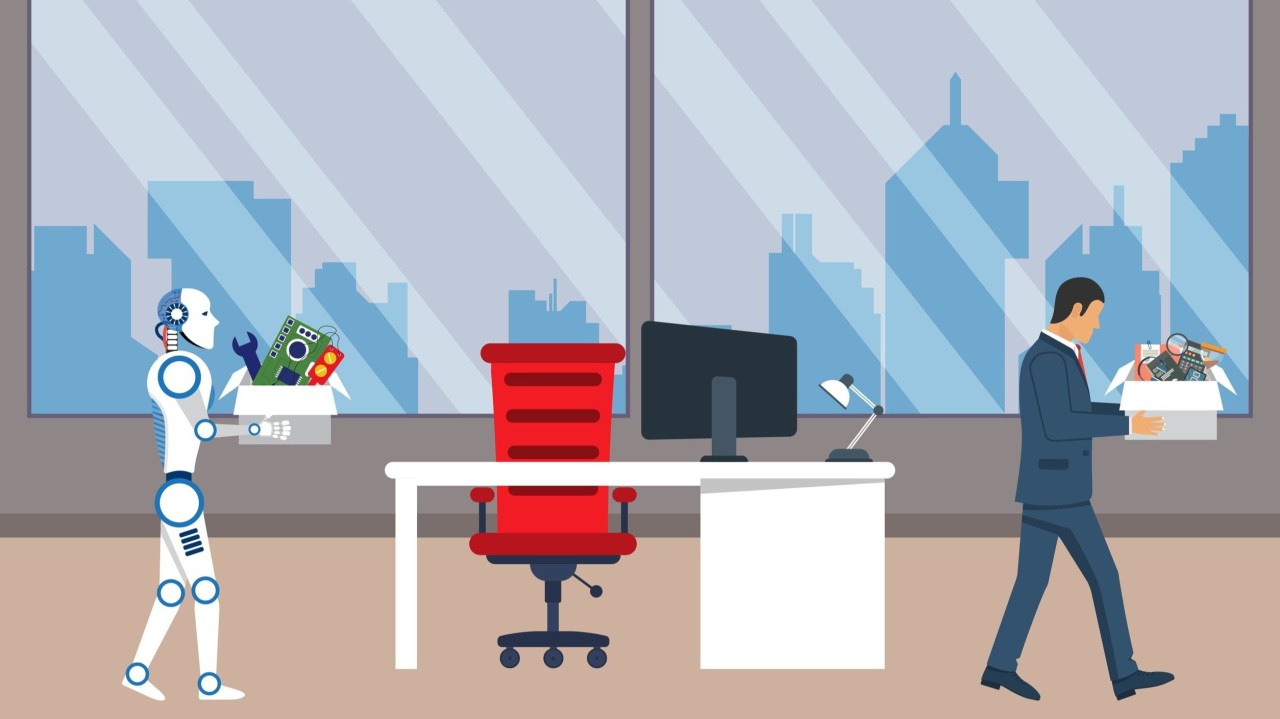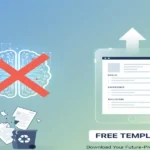Introduction
Artificial intelligence (AI) has shifted from being a futuristic buzzword to a central force shaping today’s economy. By 2030, its reach will be even more profound. From customer service bots and diagnostic tools to predictive analytics and self-driving vehicles, AI technologies are rapidly moving into the core of business operations and everyday life.
For workers, this raises a pressing question: what happens to jobs and careers in the coming decade? Headlines warn of millions of positions disappearing, while others celebrate the potential of AI to unlock growth, create entirely new industries, and improve quality of life.
The reality is nuanced. AI will indeed replace some roles, but it will also transform many more, requiring a rethinking of skills, career paths, and even the meaning of work itself.
This article explores how AI is expected to reshape jobs and careers by 2030. Drawing on insights from leading research firms, universities, and think tanks, it highlights which roles are most at risk, which are likely to evolve, and which are resistant to automation. It also outlines the skills workers will need, the uneven global impact, and strategies to prepare for the future.
2. The Big Picture: AI and the Global Economy
2.1 A Trillion-Dollar Boost
AI’s economic potential is immense. McKinsey Global Institute estimates that AI could add $13 trillion to global GDP by 2030, contributing an extra 1.2% growth per year [1]. The gains will come from efficiency improvements, cost reductions, and the creation of entirely new markets powered by intelligent systems.
Goldman Sachs projects that AI could affect up to 300 million full-time jobs worldwide, meaning nearly one-fifth of the global workforce will face some degree of disruption [2]. While not all these jobs will vanish, the scale illustrates just how transformative AI will be.
2.2 Creative Destruction in Action
Economists describe technological change as “creative destruction”: new technologies disrupt established industries but generate new ones. The steam engine, electricity, and the internet all followed this pattern. AI, however, is unique in its ability to automate not only manual work but also cognitive tasks once considered the preserve of humans. That means both blue-collar and white-collar workers will be affected.
2.3 The Productivity Paradox
A 2023 MIT and Boston University study found that AI tools increased customer support agents’ productivity by 14%, with the greatest improvements among lower-skilled workers [3]. This suggests AI could help close performance gaps by assisting less experienced employees. Yet it also raises concerns about wage compression—if AI makes all workers equally efficient, pay scales may flatten.
2.4 Uneven Distribution of Benefits
The benefits of AI adoption are unlikely to be evenly shared. Early adopters—whether nations, industries, or companies—will reap disproportionate rewards. Developing countries with less access to infrastructure or digital skills may struggle, potentially widening global inequality. Within countries, urban centers are likely to advance faster than rural areas, further concentrating opportunities.
3. Jobs Most at Risk by 2030
3.1 Routine and Repetitive Work
Jobs that involve predictable, repetitive tasks are prime candidates for automation. Roles such as telemarketers, data entry clerks, receptionists, and basic customer service representatives are particularly vulnerable. AI chatbots, virtual assistants, and automated scheduling tools can perform these functions with speed and accuracy.
3.2 Financial and Administrative Roles
AI systems excel at handling structured data, making them a threat to positions like bookkeeping, payroll processing, and certain accounting functions. Automated underwriting and fraud detection tools also mean parts of the finance sector—especially those focused on routine analysis—will shrink.
3.3 Logistics, Retail, and Warehousing
Self-checkout kiosks, warehouse robots, and AI-driven inventory management are already transforming retail and logistics. By 2030, these systems will be widespread, reducing demand for cashiers, warehouse pickers, and stock clerks.
3.4 Legal and Research Functions
Generative AI tools that can sift through large volumes of information threaten research-heavy roles. Paralegals, junior legal researchers, and market analysts may see significant portions of their tasks automated, though senior professionals will still be needed to interpret and apply results.
4. Jobs That Will Evolve, Not Disappear
4.1 Healthcare Professionals
Doctors, nurses, and other clinicians are unlikely to be replaced, but their work will change dramatically. AI diagnostic systems can identify diseases from scans or lab results faster than humans. Rather than removing doctors, these tools free them to focus on patient care, empathy, and decision-making.
4.2 Marketing and Creative Work
Marketers now rely on AI for customer insights, personalized campaigns, and performance analytics. By 2030, the role will shift from manual campaign execution to strategic oversight and creative direction, as machines handle routine optimization.
4.3 Engineers and Data Scientists
AI can generate code, test systems, and identify bugs, but engineers will remain essential to design, integrate, and supervise these systems. Similarly, data scientists will evolve into roles that emphasize problem framing, ethical oversight, and domain expertise.
4.4 Finance and Business Analysts
While some finance tasks will be automated, professionals will increasingly focus on interpreting AI outputs, advising clients, and making strategic decisions. The role will shift from data crunching to high-level judgment.
5. Jobs AI Won’t Replace Anytime Soon
5.1 Education and Training
Teachers, mentors, and coaches provide empathy, inspiration, and human connection that machines cannot replicate. AI may support personalized learning paths, but human educators will remain critical for guidance and motivation.
5.2 Psychology and Counseling
Emotional support, therapy, and counseling rely heavily on human empathy, trust, and nuanced communication. While AI can assist with monitoring or providing self-help tools, it cannot replace the therapeutic relationship.
5.3 Leadership and Human Resources
Managing teams, resolving conflicts, and providing leadership depend on interpersonal skills. Leaders and HR professionals will use AI for decision support but remain vital for shaping organizational culture.
5.4 Skilled Trades and Complex Surgery
Professions requiring fine motor skills, creativity, or adaptability—such as surgeons, electricians, and plumbers—are difficult to fully automate. Robots may assist, but humans will continue to play a central role.
5.5 Creative Professions
Despite generative AI’s ability to produce art, music, or writing, the uniquely human perspective will remain valuable. Writers, filmmakers, and designers who leverage AI as a tool rather than a competitor will thrive.
6. Data-Rich vs. Data-Poor Industries
6.1 Data-Rich Sectors
Industries with abundant structured data—like finance, software, and customer support—are highly exposed to AI disruption. Machine learning systems thrive where data is plentiful and tasks are repetitive.
6.2 Data-Poor Sectors
Fields like construction, hospitality, and parts of healthcare are harder to automate due to variability, lack of digitized data, or the need for physical presence. In these industries, AI will augment rather than replace human work.
SEE ALSO: Top 10 Essential Career Skills 2025 to Stay Ahead of the Future
7. The Skills Shift
7.1 Technical Skills
Workers will need at least a basic understanding of AI systems. In-demand roles will include machine learning specialists, AI auditors, data scientists, and prompt engineers.
7.2 Soft Skills
Equally important are human-centric abilities: creativity, adaptability, leadership, problem-solving, and emotional intelligence. These cannot be easily replicated by algorithms.
7.3 Lifelong Learning
Continuous reskilling will become the norm. Online platforms, micro-credentials, and corporate training will support workers in adapting to shifting demands.
8. Where the New Jobs Will Be
8.1 Human-AI Collaboration Roles
New positions will emerge to train, monitor, and integrate AI systems. “AI ethicists” and “AI auditors” will ensure fairness, accountability, and transparency.
8.2 Emerging Industries
AI will fuel growth in areas such as personalized healthcare, sustainability technologies, autonomous transportation, and robotics maintenance. These industries could create millions of new jobs by 2030.
8.3 Entrepreneurship and Creative Fields
Lower barriers to entry will empower individuals to launch businesses or creative projects using AI tools, expanding the gig and freelance economy.
9. The Uneven Impact Across the Globe
9.1 Developed Economies
High-income countries are more likely to adopt AI early, potentially boosting productivity but also risking short-term unemployment in certain sectors.
9.2 Developing Economies
Emerging markets may face slower adoption due to limited infrastructure, but they also have opportunities to “leapfrog” by skipping intermediate stages of development. However, the digital divide could worsen inequality.
9.3 Regional and Urban Divides
Within countries, metropolitan regions with tech ecosystems will advance fastest, while rural areas may lag. Governments will play a critical role in ensuring inclusive growth.
10. Adapting to Thrive in 2030
10.1 Strategies for Workers
- Embrace continuous learning through online platforms and micro-credentials.
- Combine technical literacy with soft skills to remain versatile.
- Pursue hybrid careers blending human creativity with machine efficiency.
10.2 Strategies for Companies
- Invest in reskilling programs for employees.
- Create organizational cultures that embrace experimentation.
- Establish ethical frameworks for responsible AI use.
10.3 Role of Universities and Training Providers
Higher education will shift from one-time degrees to lifelong partnerships, offering modular training to keep alumni relevant.
11. Challenges and Risks
11.1 Displacement vs. Creation Gap
The pace of job loss may temporarily outstrip job creation, leading to unemployment spikes if retraining lags behind automation.
11.2 Ethical Concerns
Bias, surveillance, and misuse of AI remain pressing risks. Without strong oversight, trust in AI systems could erode.
11.3 Regulation and Policy
Governments will need to balance innovation with protection, crafting policies that support workers while encouraging growth.
12. The Future Outlook
By 2030, AI will be deeply embedded in the workplace. Some jobs will vanish, others will transform, and entirely new ones will emerge. The key difference from past waves of automation is that AI targets both manual and cognitive tasks, challenging workers across the skill spectrum.
Yet the long-term outlook is not one of mass unemployment. Instead, it is a story of adaptation. Workers, companies, and governments that invest in skills, infrastructure, and ethical safeguards will harness AI as a partner rather than a threat.
13. Conclusion
AI’s impact on jobs and careers by 2030 will be profound, but it need not be catastrophic. The future of work will depend on how quickly we adapt to a world where intelligent machines are collaborators. While routine tasks fade, the uniquely human qualities of creativity, empathy, leadership, and judgment will only grow in importance.
The challenge is clear: resisting change is futile, but embracing lifelong learning, hybrid skills, and responsible AI integration will allow workers and organizations to thrive in the new era.
Key Takeaways
- By 2030, AI could add $13 trillion to global GDP but disrupt up to 300 million jobs.
- Routine, repetitive, and data-heavy roles are most at risk.
- Human-centered roles—teachers, psychologists, leaders, and creatives—remain resilient.
- Success will hinge on hybrid skills, combining technical literacy with creativity and empathy.
- New careers will emerge in AI ethics, oversight, integration, and sustainability.
- Governments, companies, and universities must invest in lifelong reskilling to ensure inclusive growth.
References (selection):
[1] McKinsey Global Institute, Notes from the AI Frontier: Modeling the Impact of AI on the World Economy, 2018.
[2] Goldman Sachs, The Potentially Large Effects of Artificial Intelligence on Economic Growth, 2023.
[3] Brynjolfsson, E., et al., Generative AI at Work: Evidence from a Customer Support Experiment, MIT & Boston University, 2023.
[4] World Economic Forum, Future of Jobs Report, 2023.
[5] Forbes, How AI Will Transform Work in 2030, 2023.






